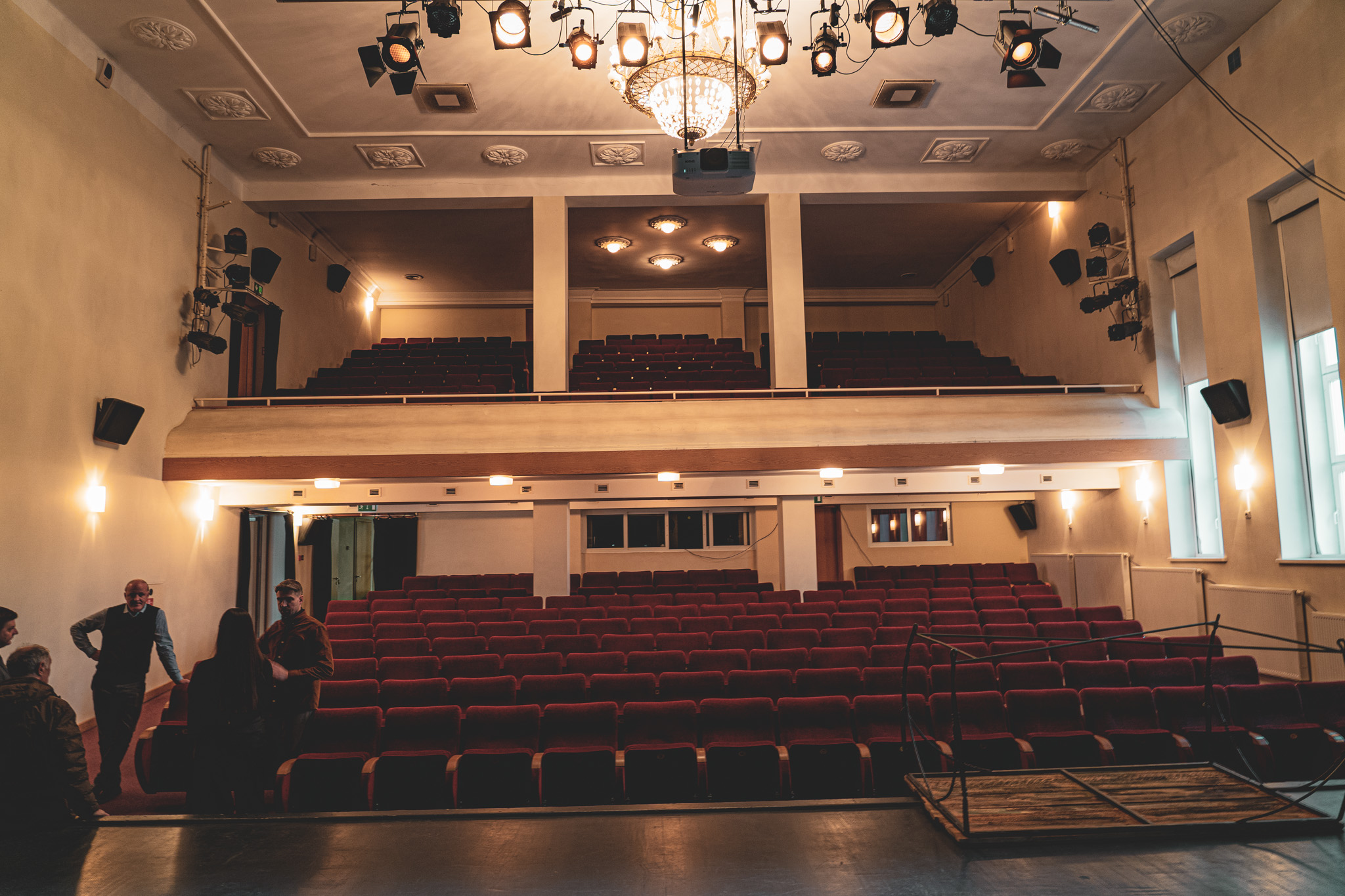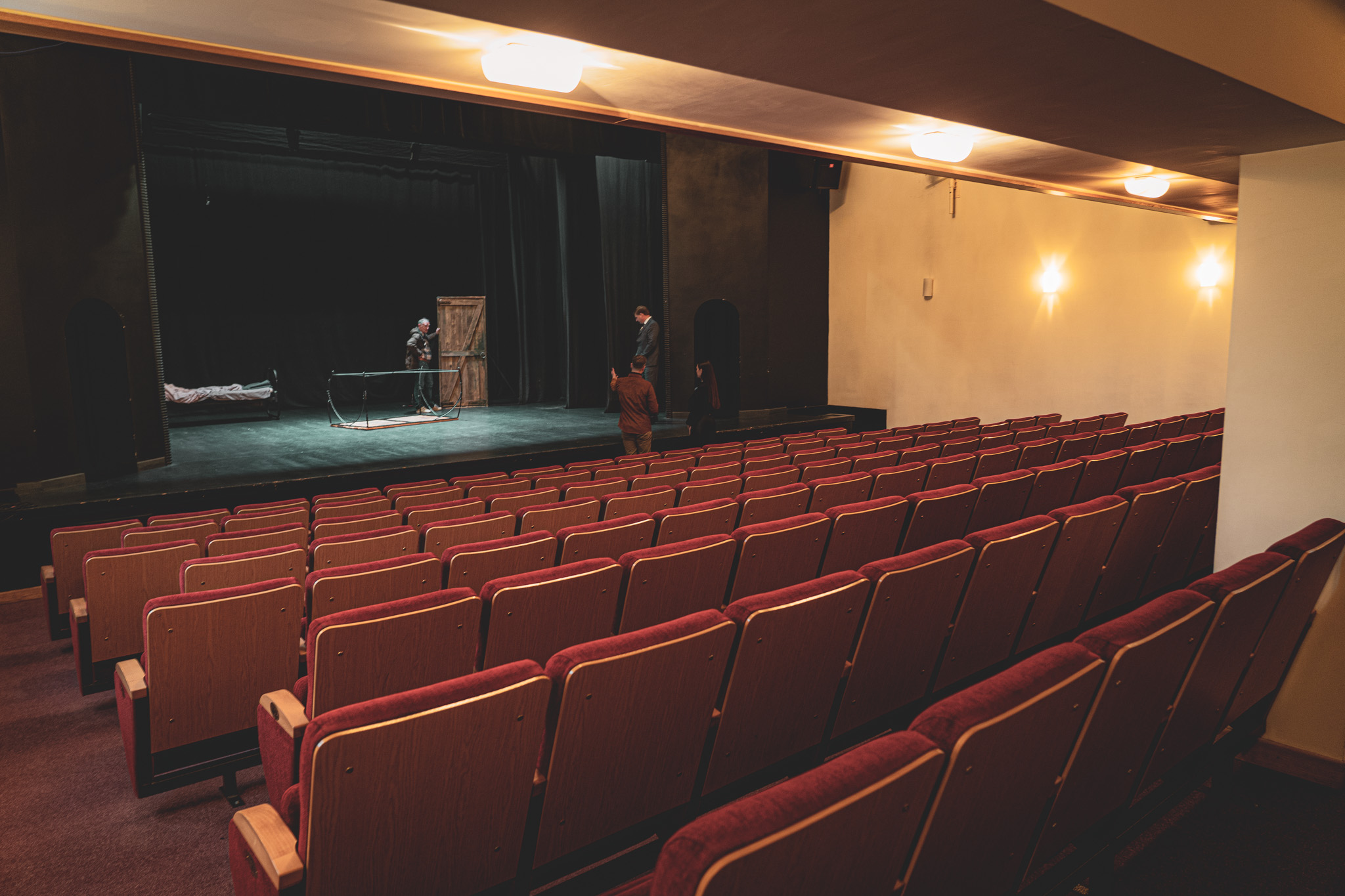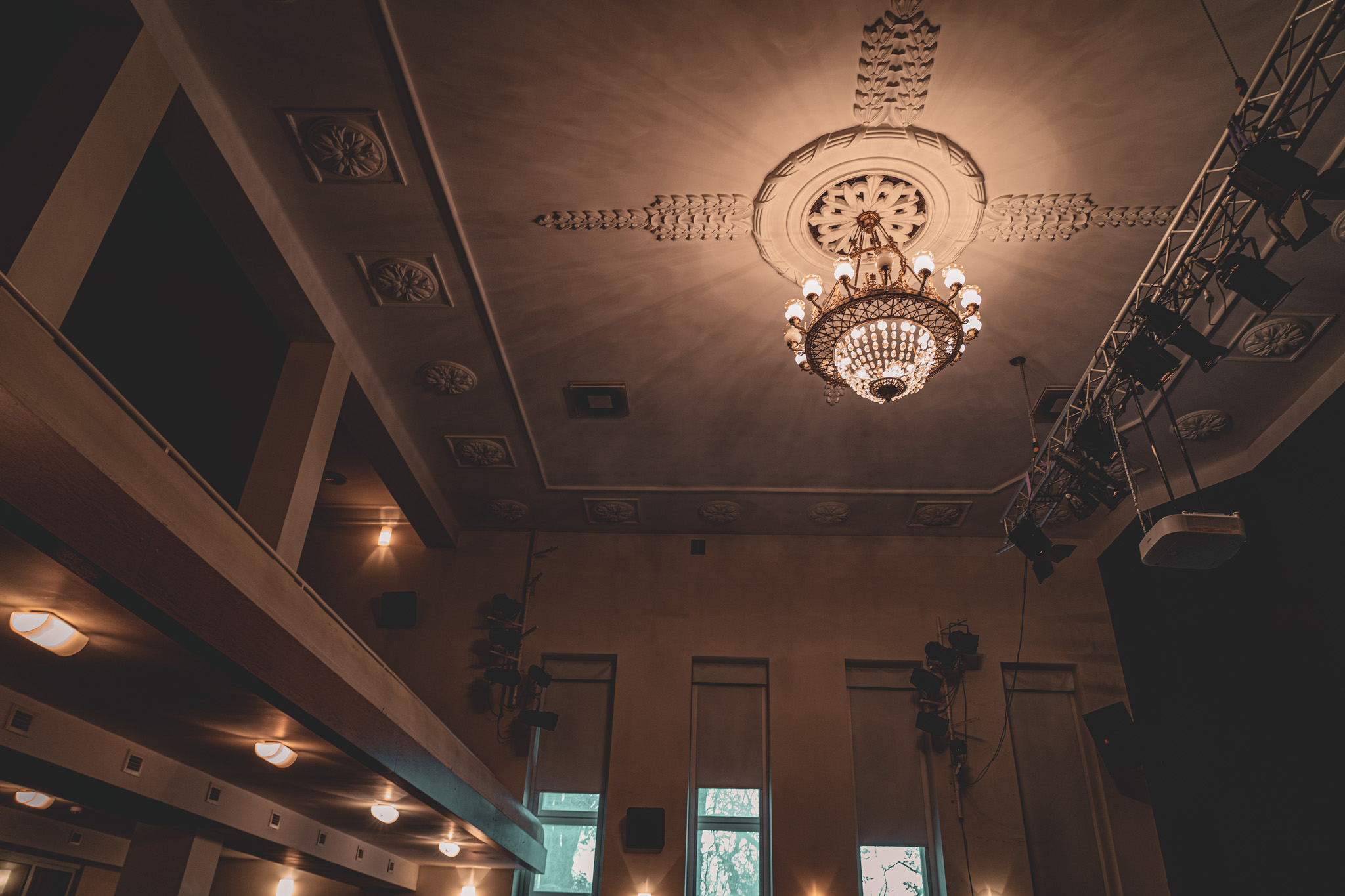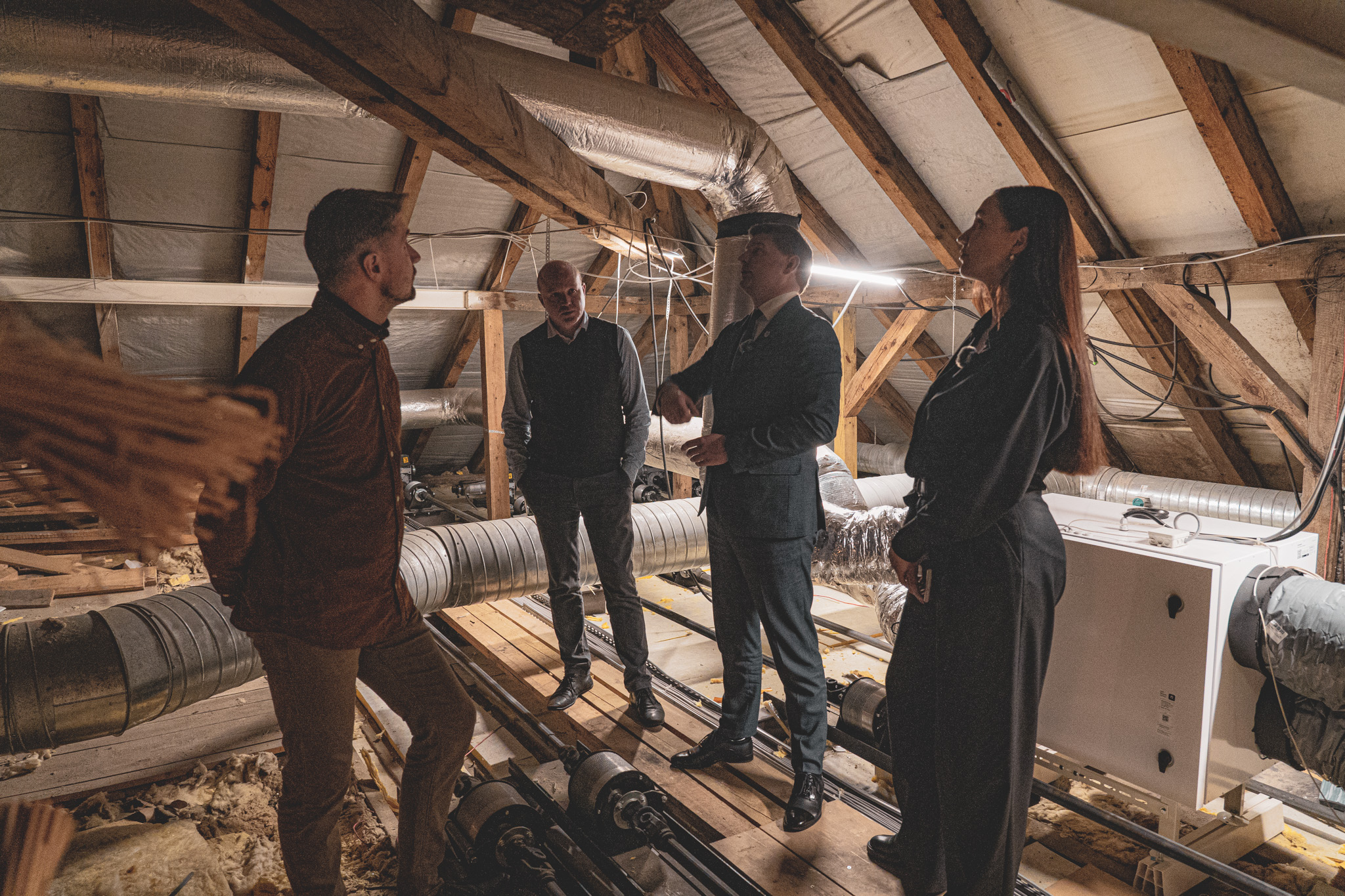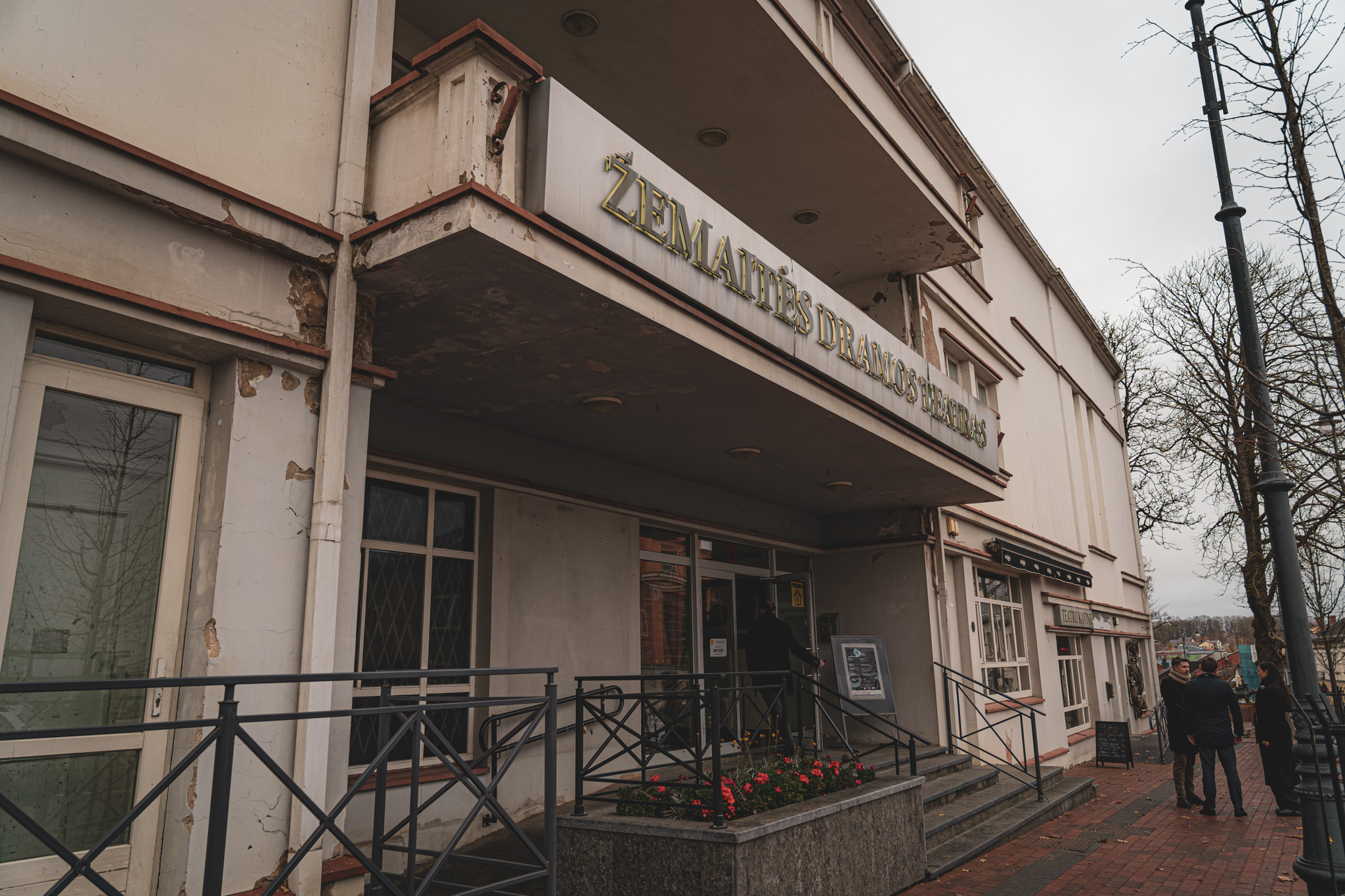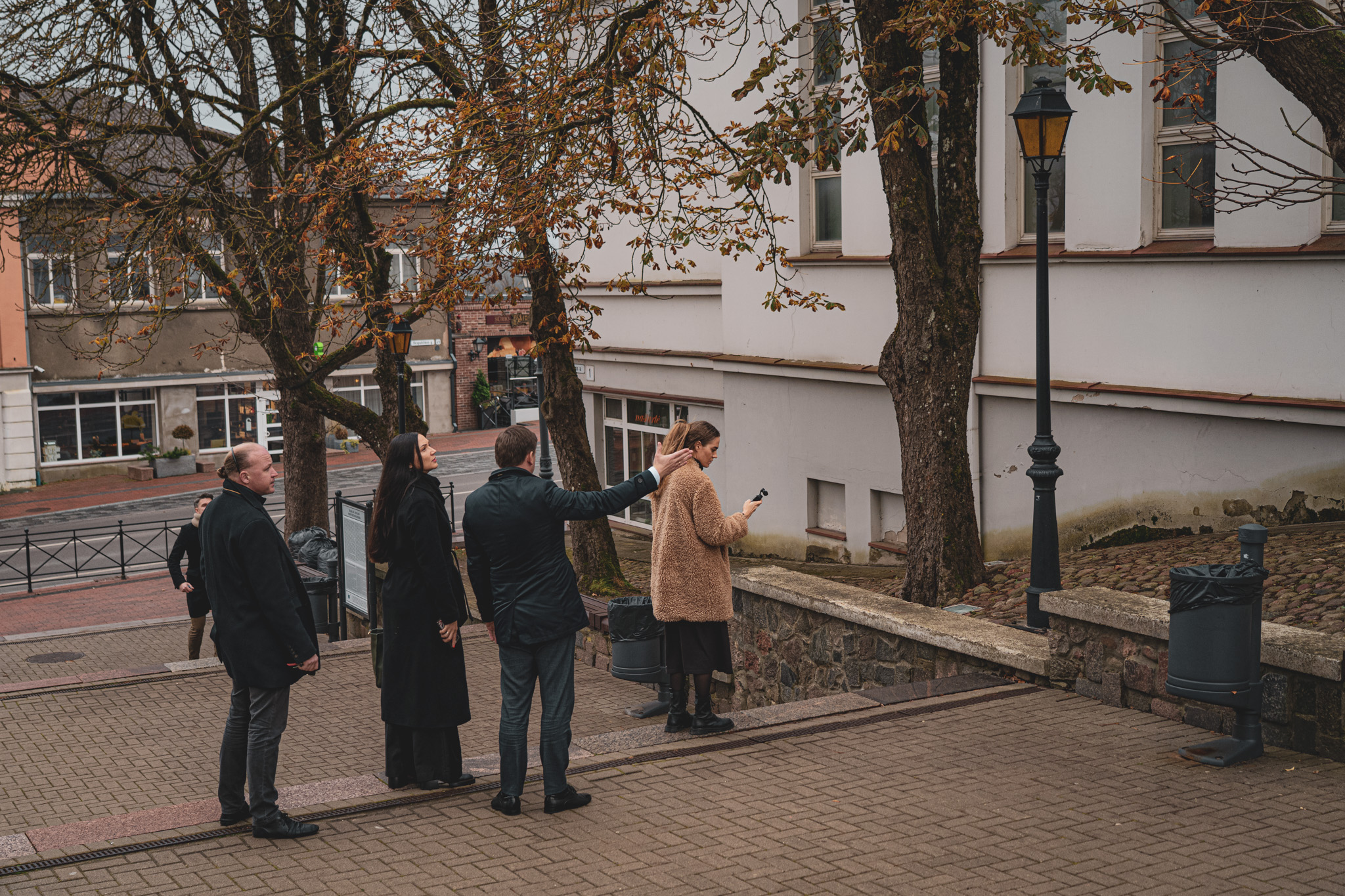Actualisation of Žemaitė Drama Theatre
Updating the Telšiai Žemaitė Drama Theatre and increasing access to cultural content
The theatre is a cultural heritage object that has not been renovated and is not adapted to the modern needs of visitors and to increase the involvement of socially vulnerable groups, and does not provide conditions for increasing public interest in cultural objects. The aim is to increase the attractiveness and economic viability of the Theatre as a cultural facility by creating conditions for improving the quality and diversity of existing cultural services and providing new ones.
Lithuania
Respublikos g. 18, LT-87333 Telšiai, LITHUANIA
Early initiative
Yes
Yes
Yes
Yes
ERDF : European Regional Development Fund
The project is funded by the EU Funds Investment Programme 2021-2027. In line with the Lithuanian Government's programme and the policy objectives set out in the EU Common Provisions Regulation, the investments under the EU Funds Programme 2021-2027 are targeted at the following main areas:
- Innovation and digitalisation, science-business cooperation, commercialisation of knowledge;
- education, skills development, a skilled workforce capable of innovating and responding to changing needs, while addressing the challenges of social exclusion;
- Green transformation - promoting renewable energy, sustainable mobility and a circular economy;
- building resilience in health systems;
- smart, safe and intermodal transport, including improving cross-border, national and regional mobility;
- Sustainable and integrated development of cities and regions, based on region-specific solutions to enhance attractiveness and economic potential, attract investment and improve quality of life.
Priority/Component - A more socially responsible Lithuania.
- Innovation and digitalisation, science-business cooperation, commercialisation of knowledge;
- education, skills development, a skilled workforce capable of innovating and responding to changing needs, while addressing the challenges of social exclusion;
- Green transformation - promoting renewable energy, sustainable mobility and a circular economy;
- building resilience in health systems;
- smart, safe and intermodal transport, including improving cross-border, national and regional mobility;
- Sustainable and integrated development of cities and regions, based on region-specific solutions to enhance attractiveness and economic potential, attract investment and improve quality of life.
Priority/Component - A more socially responsible Lithuania.
No
78: Telšių rajono savivaldybė (LT)
Project applicant - Telšiai District Municipality Žemaitės Drama Theatre, partner - Telšiai District Municipality Administration. The problem is that the cultural heritage object, which has not been renovated and is not adapted to the modern needs of visitors and to increase the involvement of socially vulnerable groups of society, does not create conditions for increasing the interest of the public in the cultural objects. This problem does not contribute to the promotion of accessibility, diversity and interactivity of cultural services, which in general does not allow for the creation of additional visitor flows, both from Lithuania and abroad, thus ensuring the attractiveness, economic viability and competitiveness of the cultural object. The objective is to increase the attractiveness, economic viability and competitiveness of the Theatre as a cultural facility by creating conditions for improving the quality and diversity of existing cultural services and providing new ones, thus attracting additional visitor flows. To this end, two activities are planned: 1) the management of the cultural object, which will include renovation works; 2) the installation of equipment necessary for the operation of the cultural object. The acquisition of innovative audio-visual and lighting equipment is planned. The project will: - Carry out the works foreseen in the simple repair project and the management works project for the Theatre (building unique No 7894-0001-3016). After the completion of the works foreseen in the project of ordinary repairs and management works, the exterior of the Theatre building will be repaired: foundation repairs, attic wall repairs, other works, while the interior of the premises will undergo floor repairs, interior wall repairs, ceiling repairs, and the repair of the attic overlay; - the equipment for the Theatre auditorium and the stage. The target groups are the users (beneficiaries) of the public services improved by the project.
Culture
Inclusion
Service development
Modern
Community experience
The project "Actualisation of the Telšiai Žemaitė Drama Theatre and increasing the accessibility of cultural content" will involve the management of the cultural object, which is included in the Register of Cultural Property of the Republic of Lithuania, and will include interior and exterior repair works. For this reason, the project will have a significant impact on sustainability in several aspects, such as:
- Energy efficiency: the management solutions for the building of the Telšiai Žemaitė Drama Theatre will include optimisation of energy consumption. This will be achieved by improving the building's insulation properties. In addition, the modern stage equipment (stage front sound system, sound mixer, stage monitors with accessories, microphones with accessories, stage lighting system, movable effects, lighting control equipment, video system) to be purchased will reduce energy consumption.
- Environmental protection: The necessary repairs will ensure that the Telšiai Žemaitė Drama Theatre building is used in such a way as to maximise its useful life, while reducing waste and the need for a new building.
- Preservation of cultural and social value: the renovation works at the Telšiai Žemaitė Drama Theatre will not only contribute to environmental sustainability, but will also preserve cultural heritage. Sustainability includes not only the preservation of natural resources, but also the protection of cultural, historical and community values. The project activities will help to preserve the cultural values of the building and give meaning to cultural life.
- Energy efficiency: the management solutions for the building of the Telšiai Žemaitė Drama Theatre will include optimisation of energy consumption. This will be achieved by improving the building's insulation properties. In addition, the modern stage equipment (stage front sound system, sound mixer, stage monitors with accessories, microphones with accessories, stage lighting system, movable effects, lighting control equipment, video system) to be purchased will reduce energy consumption.
- Environmental protection: The necessary repairs will ensure that the Telšiai Žemaitė Drama Theatre building is used in such a way as to maximise its useful life, while reducing waste and the need for a new building.
- Preservation of cultural and social value: the renovation works at the Telšiai Žemaitė Drama Theatre will not only contribute to environmental sustainability, but will also preserve cultural heritage. Sustainability includes not only the preservation of natural resources, but also the protection of cultural, historical and community values. The project activities will help to preserve the cultural values of the building and give meaning to cultural life.
The project will address the problem of updating and enhancing the attractiveness of cultural objects by increasing the attractiveness of the Theatre's content and contributing to the enhancement of cultural attractions. Especially as our country is not a large one with a seasonality problem, each attraction is very valuable. This has been especially true since the pandemic period, when the public has been increasingly focused on leisure activities. Updating the cultural facility and the content of the cultural services it provides, adapting it to the needs of modern visitors, and incorporating innovative new productions will attract additional visitor flows. However, the project goes beyond the general updating and attraction of cultural sites. The theatre is included in the Register of Cultural Property of the Republic of Lithuania. This Constructivist-style building has been given the code of a unique object, the status of a state-protected object, and has been attributed architectural properties of value.Each cultural heritage site has its own unique history and meaning, reflecting the past, traditions, values and way of life of a nation. Therefore, the management of the Theatre not only preserves its physical condition, but also transmits its historical, architectural and artistic significance to future generations. The project will also contribute to the emotional well-being of the residents. Theatre as an art form is a powerful tool for people's emotions and psychology, as it allows the audience to escape from everyday life, to reflect, to feel a range of emotions that enrich the audience's experience and stimulate creative inspiration. Also, the actualised Theatre will develop social and cultural interactions, as people participating in theatre will feel connected to other spectators, creating a shared experience that strengthens the emotional bond between them.
The existing internal infrastructure of the Theater Building is minimally adapted to the needs of socially vulnerable groups. The building is old and due to limited funding, the adaptation to the target groups is minimal, only equipped with a ramp and a lift for people with disabilities. The actualization of the Theater's infrastructure will ensure the involvement of socially vulnerable groups in the culture, providing maximum access to the results of the project. It is planned to implement 7 principles of universal design, all possibilities will be created for people facing disability or disability situations, to independently move within the territory of the building, to enter the building, and to move independently as much as possible. In addition, the theatrical infrastructure is not used efficiently enough, so the growth in the number of visitors is not optimal, and cultural services do not reach all their potential users. The project will increase user engagement. Not only will the visual image be improved, but it will also allow for greater self-expression of directors and actors and the creation of modern and modern performances. Actualizing the content of the cultural services provided, adapting it to the needs of modern visitors, incorporating innovative new productions and more innovative performances will ensure the diversity of the supply, as well as the affordability and accessibility of the services provided to a wider audience. It is unique that young people are the target group of the cornerstones, for whose attention it is necessary to compete. Theater is no exception, so there is a tendency for few young people to visit this Theater too. This is due to the fact that young people need not only interesting content, but also visual and sound effects, a synthesis of various types of art. The introduction of modern audio, video technologies on the stage, will allow to increase interest among young people as well.
At the project initiation stage, in 2021, the strategic development plan of the municipality for 2022-2030 was prepared (approved by the municipal council by decision No T1-5 of 27 January 2022), during its preparation: 1)a survey of the opinion of the population was carried out, 2)on 9 March 2021, by Decree No M1-30 of the Mayor of the municipality, 6 working groups on the preparation of the plan (Coordination, Social Environment and Services, Economic Environment and Innovation) were established by Decree No M1-30 of the Mayor of the Municipality of 9 March 2021, 103 persons were appointed as members of the cultural and urban environment, living environment and freedom, Management and quality): members of the municipal council, administrative employees, heads of municipal institutions and enterprises, representatives of state institutions and bodies operating in the city, representatives of business structures, representatives of non-governmental organizations, representatives of the community, etc.As a result, in the strategic development plan until 2030, one of the priority measures is specifically related to the Theater – the creation of the Professional Samogitian Theater. This means that by 2030 it is planned to create a professional theater in Telšiai, and for the creation of such a theater it is necessary to have the appropriate infrastructure. In the preparation of the strategic document, engagement took place both horizontally and vertically. At the project implementation stage, by order of the Director of Municipal Administration No. A1-621 of 16 May 2024, a project working group was formed, which organizes regular meetings with the Director of the Theater and other specialists, communicates through various means of communication. In addition, local politicians and municipal and theater employees have direct contact with residents through daily activities during which they systematize information about what their needs are and what would respond to them.
1. At the local level, the strategic development plan of the municipality until 2030 was prepared at the local level in 2021, during its preparation: 1)a survey of the opinion of the population was carried out, 2)On 9 March 2021, 103 persons were appointed as members of the working group on the preparation of the plan by the mayor of the municipality No. M1-30: members of the municipal council, employees of the administration, heads of municipal institutions and enterprises, representatives of state institutions and bodies operating in the city, representatives of business structures, representatives of non-governmental organizations, representatives of the community, etc. As a result, in that development plan for 2030, one of the priority measures is specifically related to the Theatre. In addition, at the local level, the municipal administration, when initiating and implementing the project, acts as responsible for its administration, the development of theatrical infrastructure and the distribution of EU funds. The municipal council, representing the electorate, participated in the decision to approve the implementation of the project and allocate funds from the municipal budget. 2.National authorities shall be responsible for ensuring that projects comply with national legislation, strategies and policies. The project is implemented in accordance with the Progress Measure No. 08-001-04-06-01 of the Programme for the Development of Culture and Creativity of the Ministry of Culture of the Republic of Lithuania for 2021-2030 "Creation of sustainable prerequisites and incentives to actualize cultural heritage values.3.The European Commission makes decisions on the allocation of the EU budget determines strategies and priorities. The European Parliament is involved in establishing common guidelines and requirements, and the European Committee of the Regions and Cities and the European Economic and Social Committee represent the regional and social partners.
-Project management:it is necessary to have knowledge of project planning, time, resources, budget and risk management. It allows you to effectively organize and monitor all stages.- Architecture and engineering:Physical renewal of the theater requires architectural and engineering solutions. This includes improving both the structure of the building and the interior, lighting and sound effects in order to create a more comfortable, functional and aesthetic environment for the audience and artists.-Scenography and design:This includes the creation of a stage layout and lighting system, as well as a visual style and atmosphere of the theater, which should correspond to the creative vision, respond to the user experience, aesthetics, functionality-Public procurement - ensures that services, goods or works are purchased in accordance with the legislation and effectively, in accordance with the principles of transparency, equality and non-discrimination.-Psychology and communication:since the project involves cooperation between group specialists, knowledge of psychology may be necessary for effective team management, negotiation and decision-making. Communication skills are necessary for the proper transmission of information. A project working group has been formed for cooperation between specialists representing these areas and consists of: a procurement specialist, a coordinator of the implementation of project activities, a specialist in project construction works, a project financier, a project manager. In addition, the working group organizes regular meetings in the presence of the Director of the Theater and other specialists, communicates through various means of communication. Added value:This mutual cooperation will allow you to create the final product – the renewed and actualized Theater. In addition, experts from different fields, in cooperation, have proposed / will offer various solutions that would not normally be possible when working in only one field
Modern performances are highly dependent on technology - the latest technologies allow you to create more impressive performances, actors and directors have more opportunities for expression, and viewers receive better services. A number of studies and books have been published that are devoted to the proper installation of the theater ("Stage Lighting: The Technicians' Guide : An on-the-Job Reference Tool", "Automated Lighting: The Art and Science of Moving Light in Theatre, Live Performance, and Entertainment", "Show Networks and Control Systems: Formerly "Control Systems for Live Entertainment", etc.). Such equipment allows you to express the experiences of the hero of the performance visually, project images on the stage, create the necessary atmosphere (by changing the spectrum, intensity, color of light, it is possible to create an atmosphere of fear, goodness, coziness, etc.). A good sound system would allow you to offer a wider range of sound solutions. Directors, with such tools, could more easily interpret the presented material, choose solutions that until recently, due to technical conditions, were not possible. The theater does not have such equipment - the existing stage equipment has been counting for decades, many actions (for example, manual labor is still used to partially replace the decorations) are done by hand. As a result, there is no way to present performances in which the decorations play a larger role, satisfied with minimalist decorations. Working in such conditions, directors and actors cannot fully reveal their talent, and the assembled audience cannot see such performances that are presented elsewhere. After the implementation of the project, the equipment of the Theater Audience Hall and stage (stage front sound system, sound mixing console, stage monitors with accessories, microphones with accessories, stage lighting system, movable effects, lighting control equipment, video system) will be purchased.
-Involvement of stakeholders in the decision-making process: at the stage of project initiation, a strategic development plan for 2022-2030 was prepared in 2021, during its preparation: 1)a survey of the opinion of the population was carried out, 2)By order of the mayor of the municipality, 6 working groups for the preparation of the plan were formed, 103 persons were appointed as their members: members of the municipal council, representatives of state institutions and bodies operating in the city, representatives of business structures, representatives of non-governmental organizations, representatives of the community, etc. During the project implementation phase, a project working group has been formed, which organizes regular meetings in the presence of the Director of the Theater and other specialists, communicates through various means of communication. In this way, interinstitutional cooperation is also ensured. - Ensuring diversity and inclusion: The introduction of modern stage infrastructure will not only improve the visual image, which is important for the viewer, but will also allow for greater self-expression of directors and actors and the creation of modern and modern performances. Actualising the content of the cultural services provided will ensure the diversity of the supply and the affordability and accessibility of the services provided to the widest possible audience. The actualization of the Theater's infrastructure will ensure the involvement of socially vulnerable groups in the culture, providing maximum access to the results of the project. Opportunities will be created for people facing disability or disability situations to move independently within the territory of the building, to enter the building, and to move independently as far as possible.-The partnership between local self-government and the cultural institution: the municipality is an active sponsor and partner of the project, ensuring the necessary financing and administration.
-Product: Modernization and adaptation of infrastructure to modern needs. Renovation of theatrical and cultural spaces using modern technologies, improving acoustics, lighting and other aspects of the infrastructure. Such projects are applied in other places to give people a higher quality cultural experience. -Product: preservation and transformation of cultural heritage. The preservation and transformation of cultural heritage can be implemented in other places and contexts, even in different circumstances. For example, the renovation of old buildings, theaters, museums or cultural centers in order to adapt them to modern functions, but to preserve their historical significance. -Process: Strengthening the role of theatre as a community centre. The creation of theater as a center of cultural and social events, which performs not only the function of entertainment, but also promotes social dialogue, unity of the community. Similar models could be applied in other cities or regions in order to enhance local cultural life. -Methodology and process: Ensuring diversity and inclusion. Elsewhere, too, a method could be sought to make cultural (not only) activities accessible to all social groups, including people with disabilities, minority groups, seniors or socially vulnerable groups, so that cultural (or other) content is available to everyone, regardless of their situation. -Process: popularization of culture. this element can be replicated in other places and in other contexts, but it is important to take into account local specificities, cultural context, needs and goals of the community. -Method: Partnership between local self-government and theatres and other cultural institutions. This method can be replicated elsewhere between other bodies or organizations in order to exchange experiences and reach out to more people, to represent their interests in a more qualitative way.
-Cultural diversity and social inclusion: Theatre will become an important tool for addressing social inclusion and cultural diversity by adapting contemporary contexts and challenges. Theater can expose the experiences of different social groups, give a voice to marginalized communities, and promote understanding of different identities. Modern theater helps people understand and reflect on these global problems through emotional and intellectual experiences, promoting empathy and solidarity.- Social and political criticism: Actualized Theater will become a tool for criticizing government institutions, political systems and social problems. Through the Theater will be able to draw the attention of the audience to the need to solve relevant global issues. -Cultural inclusion: The COVID-19 pandemic situation in the world has hit the cultural sector hard. In addition to the previously identified problems in the cultural sector, the problems caused by the restrictions on events and the suspension of employment activities contributed. All this had a negative impact on society in the general sense, since passive rest at home at the tv or computer was involuntarily promoted. Such changes have particularly affected the younger generation, who must already be encouraged to choose cultural activities instead of computer games. Young people are one of the cornerstones of the target groups, for which attention must be competed, because it is the growing generation, whose habits, needs and desires can be formed by various means and which in the future will educate their offspring on the basis of this. Therefore, a well-formed approach to culture and its benefits will bring enormous added value, not only nationally, but also internationally. Therefore, the project will promote the participation of the population, especially young people, in culture and its even consumption, which gives cultural potential for conscious development of society.
This part/item is described in the previous points/paragraphs of the application.

